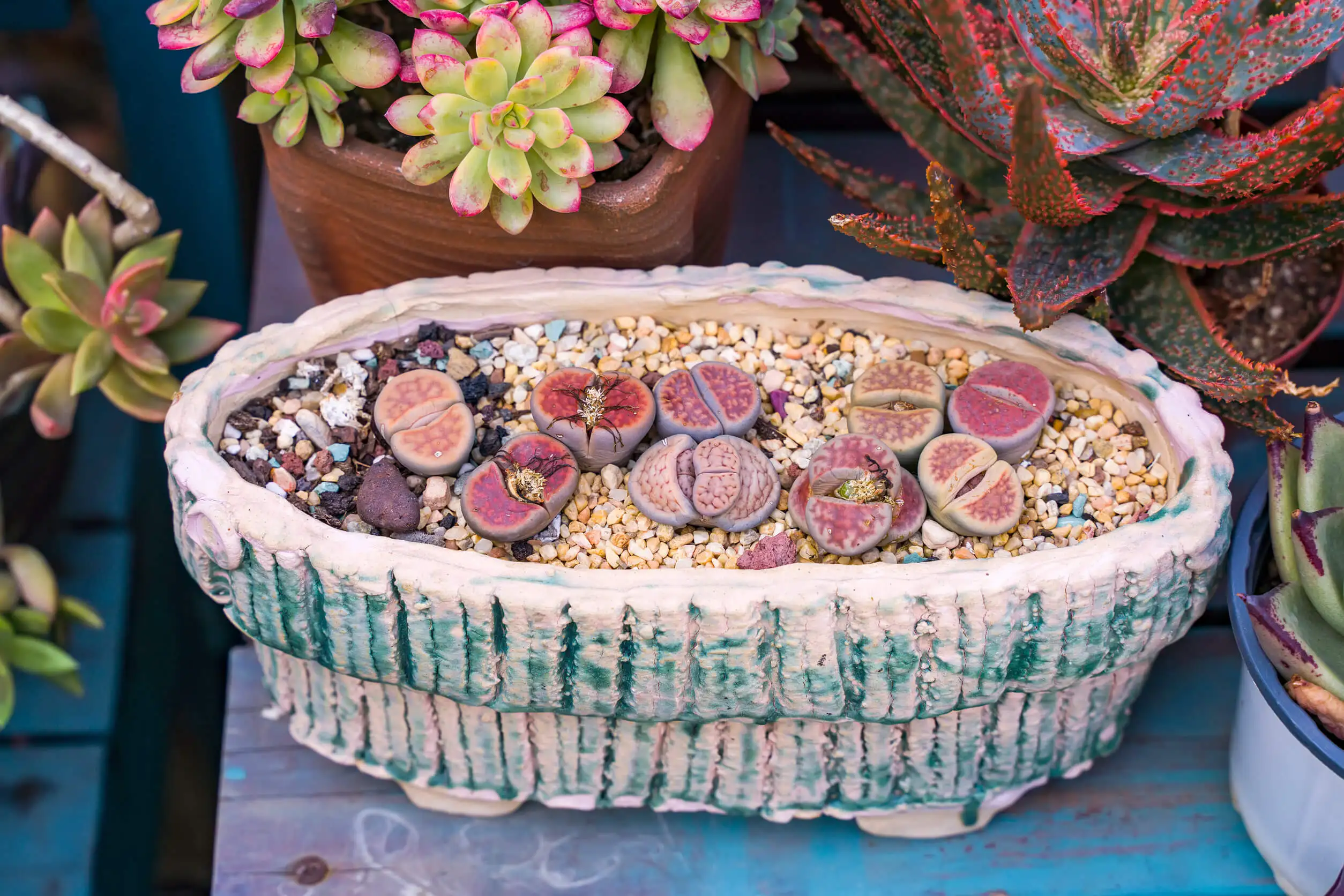Are Cactus and Succulents the Same Thing? Find Out Why They're Not

There are those who claim that cactus and succulents are the same. However, there is ignorance behind this statement. Although there are similarities between both plants, they cannot always be equal.
Understanding that it’s often easy to confuse the two (despite their spines) we want to delve deeper into the specific characteristics. Understanding that cacti and succulents are different will allow you to take much better care of your plants. Are you interested in knowing more? We know you are!
Cacti: What are their characteristics?
Cacti, or Cactaceae, group more than 15 genera and 73 species. Their main characteristic lies in their spines.
These pointed spines have a very interesting survival function. First, they prevent animals from eating them – or at least, they make it very difficult for them to do so.
Secondly, they capture the dew water drops that appear during the first hours of the day, allowing the plant to count on liquid. This function is essential because cacti are native species of deserts and arid zones.
According to the Botanical Garden of the University of Valencia, cacti are part of the succulent family, because they share the ability to store water in their structures: stem, root, and leaves. This institution is emphatic in pointing out that all cacti are succulents, but not all succulents are cacti.

Now, what are succulents?
According to research on succulents, these plants are distinguished by their ability to store water in different structures, as already mentioned. In addition, they have the particularity of presenting a photosynthetic metabolism called crassulacean acid metabolism (CAM).
Their stomata close during the day but open at night. This prevents further water loss.
This is how specimens belonging to this large family survive so well in arid or desert areas. It’s estimated that there are about 60 botanical families of succulents.
They include almost all plants that have the capacity to store this vital liquid. Such is the case of cacti and succulents. In addition, there are two other groups of succulents worth mentioning:
- Agavaceae: These are used by humans for the production of certain food products and alcoholic beverages. Examples are agave and sanseviera.
- Apocynaceae: With a toxic component from which quinine is extracted, these plants usually inhabit tropical and subtropical soils. Oleander is a common example of this group.
We think you may also enjoy reading this article: We Recommend 6 Succulent Plants to Decorate Your Home
So, what are crassulas?
The term crassulas is also often confused with succulents and cacti. Although it’s common to interchange them, it’s becoming clear that we’re not talking about the same thing.
Crassulas are plants that belong to a particular family within the category of succulents. In popular usage, the term is used to refer to those succulents that are not cacti. However, it should be noted that they form a specific group, such as cacti, Agavaceae or apocynaceae.
Crassulas are plants that store water in their structures and are characterized by having those beautiful plump and almost translucent leaves that form rosettes. They do not have thorns, so they have made use of tiny hairs that cover their surface to capture the dew.
Aloe vera is a succulent, for example. Within this group, we can find more than 500 varieties that share a short stem from which they grow their thick, triangular leaves.
Another example of crassia is the lithops. These particular plants are known as living stones in some places and have gained ground in home decoration. They have only two leaves and their size is small, barely reaching 4 centimeters.
We can also mention the sempervivum. From Europe to America, these vegetables are even smaller at barely 3 centimeters tall.

Like this article? You may also like to read: How to Make a Moss Guide or Support for Climbing Plants
Do you understand the differences between cacti and succulents?
We know this can be a complex subject. In fact, that’s why many people simply explain that cacti and succulents are the same things. However, they really aren’t.
That said, we want to be very clear on the subject. We will now summarize the main differences between cacti, succulents, and crassulas.
We will start by mentioning that crassulas are succulents that have quilted leaves (those leaves that we love so much)! With them, they store as much water as possible. They come in different sizes and shapes. Depending on their specific type, they have varying methods of liquid storage.
Cacti or cacti, on the other hand, have a fleshy stem that stores water. Depending on their species, they may or may not have thorns.
They are also distinguished from crassulas because cacti have an areole or small node from which their thorns grow. These areoles can be white or of different colors; it is from there that the flowers of the species that bloom come out.
We’ll finish by telling you that the care of cacti and crassulas, being succulents, is similar. The main thing is to avoid waterlogging the substrate because overwatering is harmful to both types.
All cited sources were thoroughly reviewed by our team to ensure their quality, reliability, currency, and validity. The bibliography of this article was considered reliable and of academic or scientific accuracy.
- Mandujano, M. D. C., Carrillo-Angeles, I., Martínez-Peralta, C., & Golubov, J. (2010). Reproductive biology of Cactaceae. Desert plants, 197-230.
- Martínez-Cortés, Magali; Manzanero-Medina, Gladys Isabel; Lustre-Sánchez, Hermes. Las plantas suculentas útiles de Santo Domingo. Polibotánica, núm. 43, 2017. Instituto Politécnico Nacional, México. Disponible en: https://www.redalyc.org/articulo.oa?id=62150424014
- Vicente bueno, José Plumed. Monografías botánicas. Jardín Botánico de la Universitat de València. Volumen 4: Los cactus. ISBN: 978-84-9133-080-6
This text is provided for informational purposes only and does not replace consultation with a professional. If in doubt, consult your specialist.








